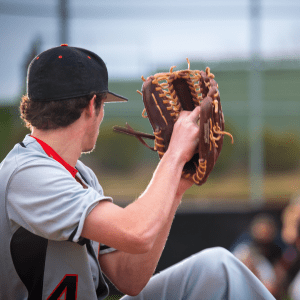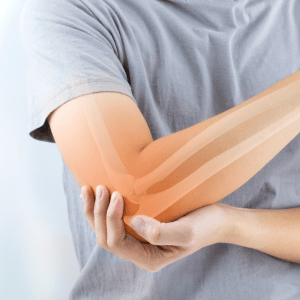Your Baseball Questions, Answered!

Baseball players, check out this Q&A with Bob Wassel, PT, DPT from our Smithfield location for information about common baseball injuries, as well as some tips & tricks to improve performance.
How can I increase my pitching speed?
A lot of variables contribute to increasing pitch speed. The biggest factor to faster pitch speed is optimizing the timing of muscle activation throughout the throwing progression. This starts from when the athlete generates energy from using their legs during the windup to then gaining torque and acceleration through the hips, trunk, shoulder, elbow, and wrist before releasing the ball. If a pitcher has deficiency of motion or stability in any joint, or lacks muscle coordination or strength in a segment of their body, it can hinder pitch speed. The goal is to address the body segment that is hindering the transfer of energy and improve the problem to lead to better results.
How can I keep my pitching arm in shape?
 Often people ask if there is something more that they can do to keep their arm in shape, and it turns into them over-throwing or throwing too often and increasing injury risk. Sometimes it is best to rest and do lighter bullpen sessions or non-throwing exercises between games to avoid this problem.
Often people ask if there is something more that they can do to keep their arm in shape, and it turns into them over-throwing or throwing too often and increasing injury risk. Sometimes it is best to rest and do lighter bullpen sessions or non-throwing exercises between games to avoid this problem.
Everyone is different, therefore a throwing program is different for every player. Someone who is already very strong but may be stiff or strain certain muscles may benefit from increased flexibility training to keep their arm in shape, while others may need to continue to perform specific strengthening exercises more regularly to make strength gains throughout the season.
What are the best exercises I can do to prevent shoulder, back, and chest pain after pitching?
Like I have mentioned before, everyone is different and exercise prescription is often individualized to the athlete. Often times when someone has chest or back pain following stints of pitching, the best preventative exercises are stretching and increasing mobility with the use of a foam roller or increasing core strength with dynamic resistance exercises. Shoulder pain is more tricky because there are many structures in the shoulder, but typically performing isometric resistance band or scapular (shoulder blade) strengthening exercises such as a row, fly, or press can help strengthen the area for less pain following use.
What is an Ulnar Collateral Ligament (UCL) Injury and how can PT help?
 A UCL injury is an injury to the inside of the thrower’s elbow, in which the ligament is damaged from overuse from repetitive torque while throwing. PT can help by providing the tools to gain or maintain adequate strength and flexibility to the muscles around the UCL to offload stress to the ligament. PT can also help by helping the ligament heal properly and monitor the strength of the ligament when tension is applied from the throwing motion or other use of the elbow.
A UCL injury is an injury to the inside of the thrower’s elbow, in which the ligament is damaged from overuse from repetitive torque while throwing. PT can help by providing the tools to gain or maintain adequate strength and flexibility to the muscles around the UCL to offload stress to the ligament. PT can also help by helping the ligament heal properly and monitor the strength of the ligament when tension is applied from the throwing motion or other use of the elbow.
After shoulder surgery, am I at higher risk of another injury?
There are many athletes that recover well from surgery in the shoulder. With proper rehabilitation and addressing what caused the injury in the first place, along with exercise prescription to limit future risk of injury, athletes often don’t experience re-injury. Although, it is always a risk that the athlete can be hurt again.
If pain or injury are keeping you out of the game, give your local Sports & More Physical Therapy by ACCESS PT office a call. We’d love to help!


